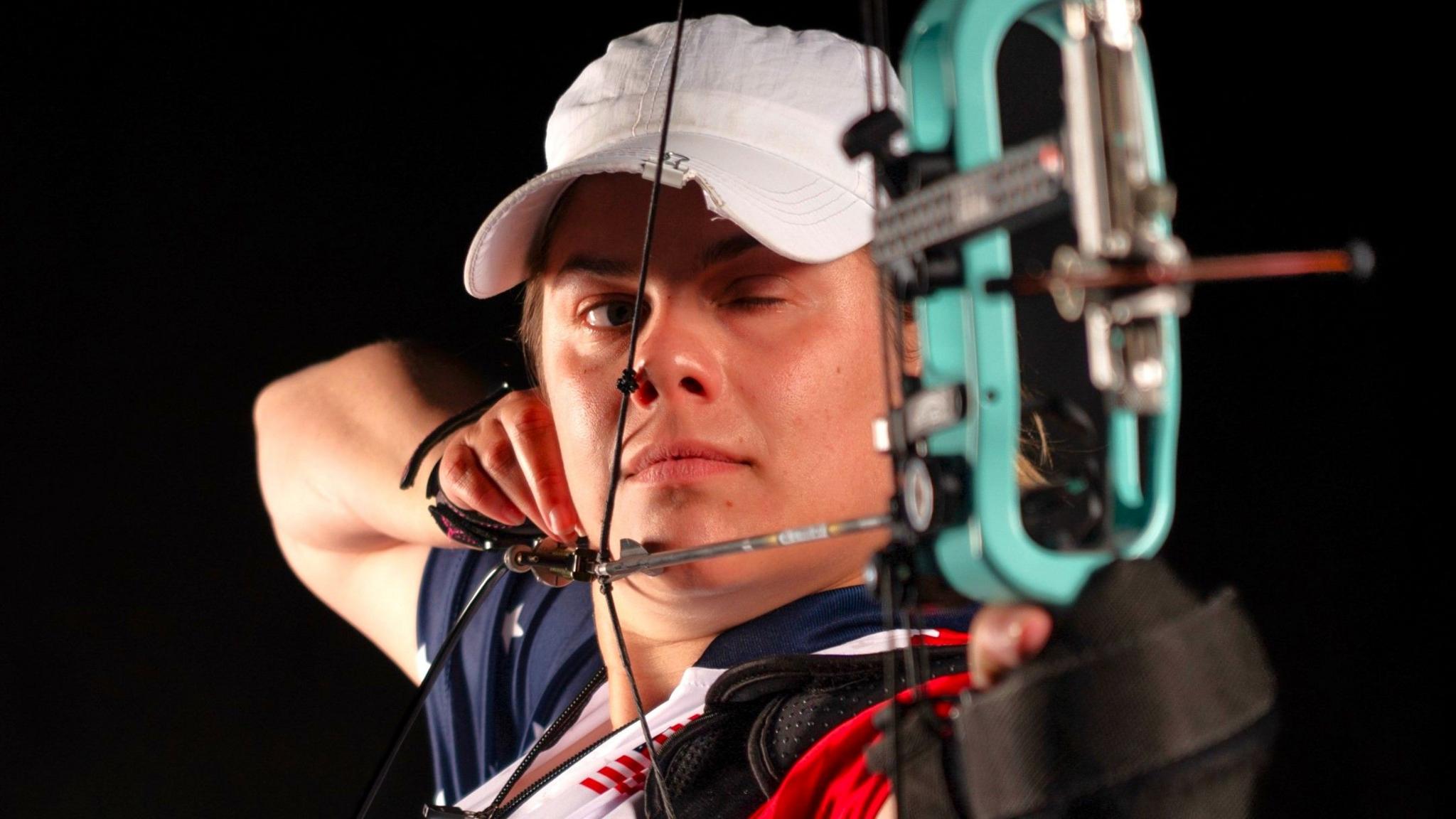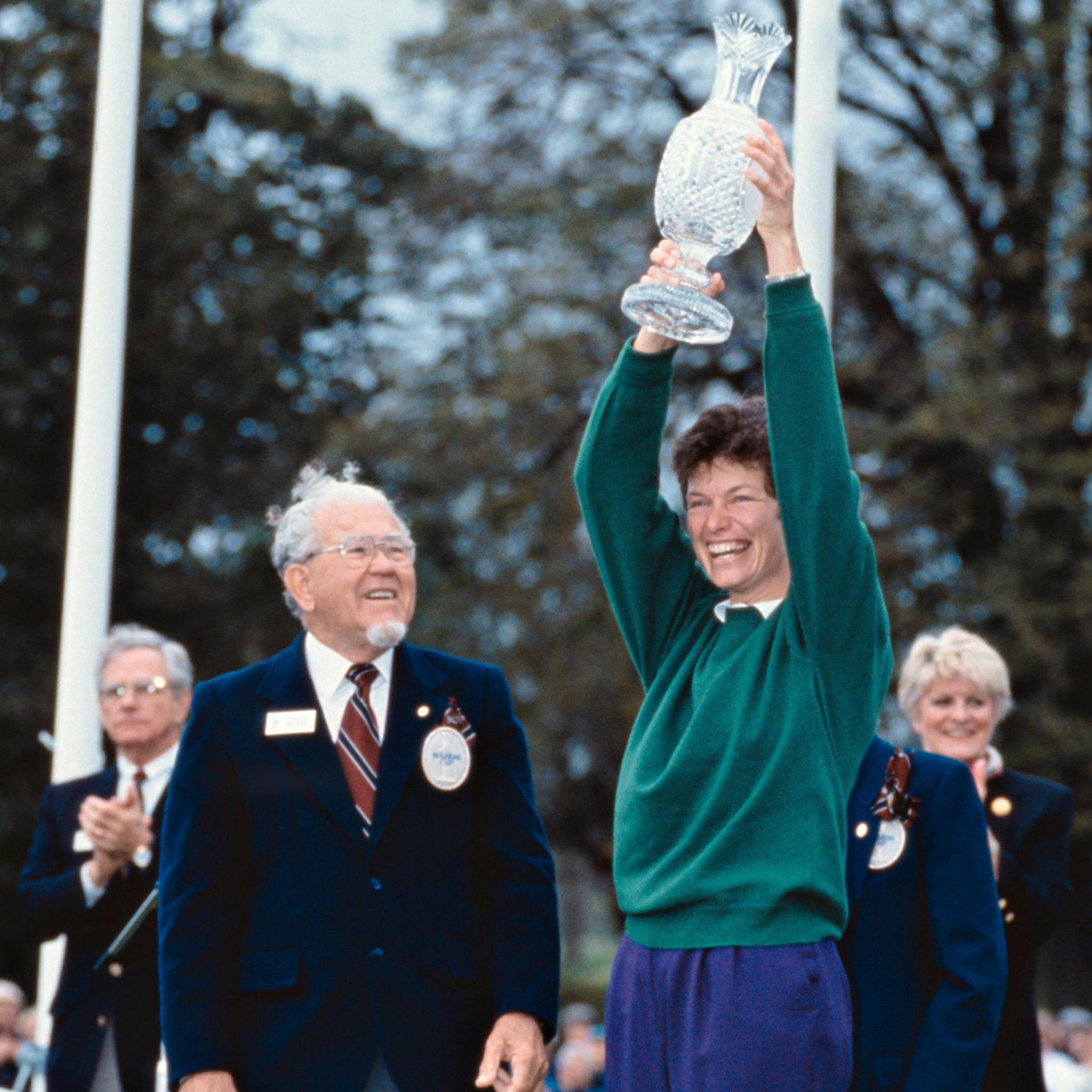
One of the biggest sporting upsets of the 20th Century happened during a bleak week in Scotland in 1992, yet there was barely a murmur in the media about it.
Two years earlier, in the Florida sunshine, the United States had demolished Europe 11½-4½ in the inaugural Solheim Cup. The Americans were heavy favourites to do the same at Dalmahoy, on the outskirts of Edinburgh.
But, amid the wind and rain, Europe spectacularly turned the tables, upsetting the longest of odds to win 11½-6½.
"It turned the Solheim Cup into a contest, which it wasn’t in the first year," Europe captain Mickey Walker tells BBC Sport.
"The Americans only thought they had to turn up to win, and they did give us a big trouncing the first time we played. They had legendary golfers in their team so the fact we won was an incredible sporting upset."
Davies' best Solheim performance
Six of the 10 players in that 1992 American team would go on to be inducted into the World Golf Hall of Fame - Betsy King, Beth Daniel, Patty Sheehan, Pat Bradley, Juli Inkster and Meg Mallon. Their players boasted 21 major titles between them, to just two on the European side - Laura Davies and Liselotte Neumann.
The US were red-and-white-hot favourites.
But they lost captain Kathy Whitworth, winner of an LPGA record 88 tournaments, who returned home on the day they arrived at Dalmahoy, following the death of her mother.
Whitworth had been inspirational in leading the US team to the first victory at Lake Nona, Florida in 1990 by pairing "personalities rather than anything directly related to golf", according to Dottie Mochrie (formerly Pepper).
And then major winner Daniel stirred the pot, while talking to a US golf magazine. "You could put any one of us on the European side and make it better, but the only Europeans who could help us are Laura Davies and Liselotte Neumann," she was reported as saying.
Sporting history is littered with such statements that only serve to fuel the underdogs, and while Daniel disputes she made those comments, Walker recalls it differently: "She said it.
"And, of course, what she said was absolutely right, but when somebody tells you you can’t do something, or that they’re better than you, you think 'I’ll show you'.
"It wasn’t nice for us to hear and it made us want to beat them even more."
Daniel was made to chew over her words on the first morning.
England’s Davies had won just one of her four major titles by 1992, but was well on her way to becoming one of the best in the world. She won all three of her matches at Dalmahoy, including the opening foursomes where she teamed up with Alison Nicholas to beat Betsy King - and Daniel, of course.
Davies and Nicholas then defeated Sheehan and Inkster on day two as Europe opened a one-point lead to take into Sunday’s singles. Davies again led the team out, winning the top match against Brandie Burton to set the platform as Europe dominated the final day 7-3 for the unlikeliest 11½-6½ triumph.
"It was Laura’s best performance playing for Europe - she was unbeatable and just brilliant, a natural leader," remembers Walker.
The weather also played its part.
"It was October in Scotland and horrendous," says Walker.
"It was wet, it rained, the course was waterlogged and if it had been a regular tournament we wouldn’t have played.
"It was miserable, but we were used to those conditions. The Americans absolutely hated it. They didn’t really do horrendous conditions and that played into our favour."
In fact, it took until Loch Lomond in 2000, again in typical autumnal Scottish weather, for the Europeans to triumph for a second time.
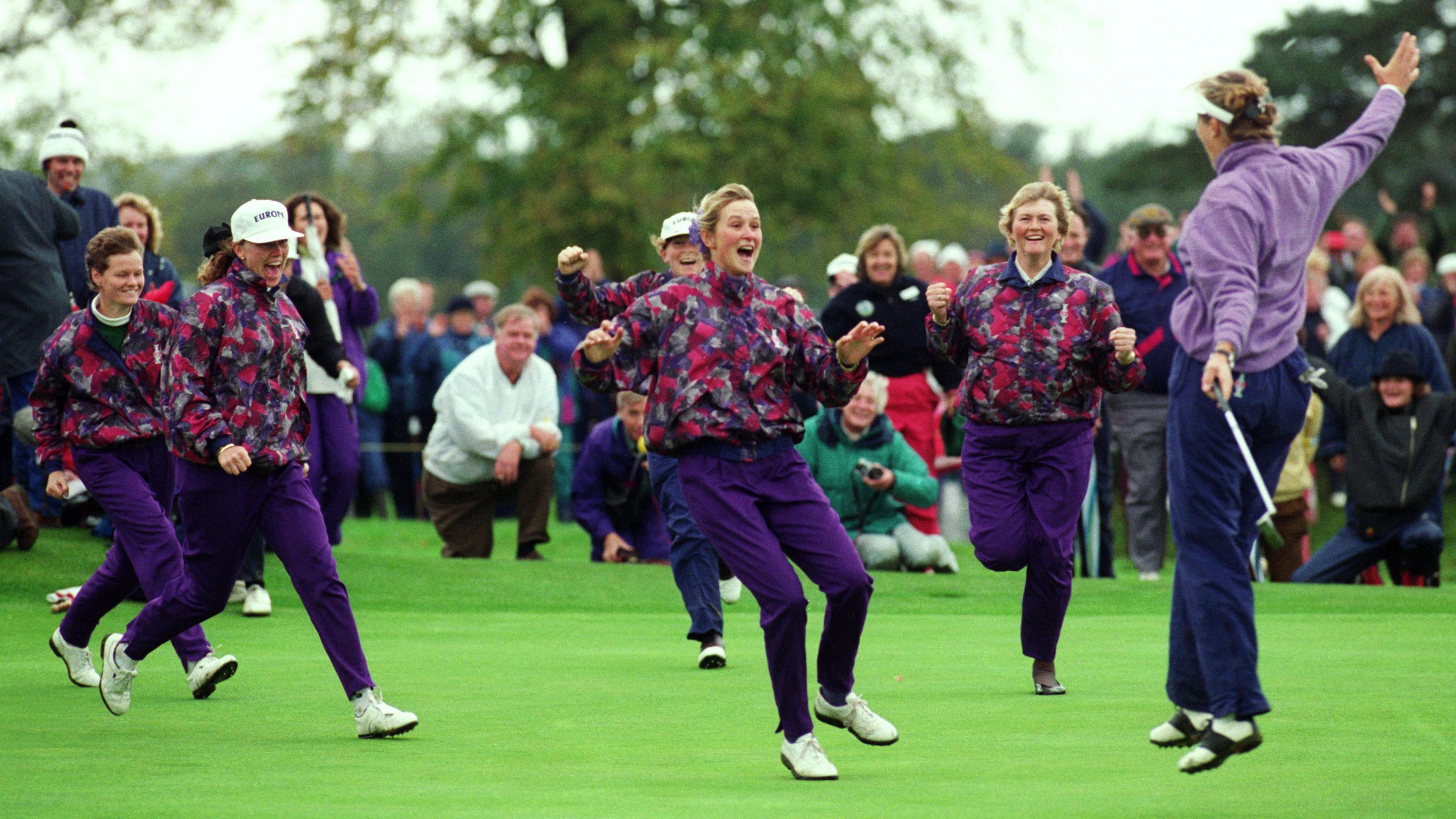
Europe's 1992 Solheim Cup victory ranks among sport's biggest upsets in the 20th Century
It started with a Ping
While it was perhaps inevitable that a women’s equivalent of the Ryder Cup would eventually emerge, it took a bold suggestion from the Women’s Professional Golfers' Association (WPGA) in the late 1980s to get the ball rolling.
The WPGA, now the Ladies European Tour (LET) was only formed in 1978. In the US, the Ladies Professional Golf Association (LPGA) had been around since 1950.
“We were 30 years behind them and didn’t have the depth of players,” says Walker, who will be on the team providing commentary for the daily BBC highlights show for this week's contest.
“I can’t pinpoint exactly how it happened but somebody came up with the idea and took it to our chief executive Joe Flanagan and he took it to the Americans.
“It was like a non-league team asking for a match against Manchester United. It was that big of a mismatch.”
But the non-league team asked, and Manchester United agreed.
The event still needed financial support. Step forward Karsten and Louise Solheim - the man who changed golf club design by tinkering with a couple of sugar cubes and lollipop sticks in the 1950s, and his wife, who made a bold pledge in early 1990.
Karsten Solheim was born in Bergen, Norway in 1911 and his family emigrated to the US in 1913. He was late to golf, aged 42 and working for General Electric when he took up the sport. He quickly realised that putting was going to be his nemesis, so the engineer did what engineers do and looked for a solution.
What emerged from experiments in his Californian garage in 1959, was the 1A putter, which had started with him attaching the shaft of the club (lollipop stick) to the middle of the blade (sugar cube) rather than the heel, and a company name based on the sound made when the metal club head struck the ball.
Ping.
American musician Murray Arnold later claimed the noise “rings out with the same 440 pitch used in tuning pianos”.

The original sketches for the 'Ping Anser', the design that revolutionised putters
Karsten’s real breakthrough came at the start of 1966. After watching the Los Angeles Open inspiration struck and he sketched the initial design for a new putter on the first thing he could find, the dust jacket of an old vinyl record.
The putter was revolutionary. It featured an offset hosel that provided golfers a clean view of the face, and lines parallel to the face to help in squaring the putter to the ball. The innovations would gradually make it the most copied putter on the market.
He was stuck for a name. Louise suggested 'Answer' because that is what he was searching for. Karsten thought it was too long, so they settled on 'Anser' – which worked because the letters fit on the toe of the club and the name could be trademarked.
A year later, Julius Boros arrived at the 1967 Phoenix Open disgruntled with his current putter. He picked up a Ping Anser and went on to win. The club has become iconic in the game, and it was at that point that Karsten left General Electric to fully focus on his golf club design.
'We were only asked to sponsor the first two'
The business was growing, money was coming in and Karsten wanted to give back to the game. In 1975 he sponsored the Karsten Ping Open in Phoenix, putting up a purse worth about £300,000 in today's money. The event reportedly lost money but Karsten picked up the tab. He increased the prize money the following year and again picked up the shortfall. He was not to be deterred.
“My dad's feeling was ladies' golf did not get the attention it should for the level of their play. He wanted to make sure that it did - and he worked hard to do that,” John Solheim, who is steeped in the family business having helped his dad make putters in the garage aged 13, tells BBC Sport.
So when then LPGA commissioner Bill Blue came knocking in January 1990 about a biennial Ryder Cup equivalent, the Solheims listened.
“Seeing what the Ryder Cup was doing, it was the right thing to do,” says John, who took over as head of the Ping organisation in 1995 and was in the room when the negotiations took place.
“We were sponsoring four LPGA events at the time and Bill asked us to sponsor the first two of these team events.
“I pulled my dad aside and said ‘look, we do two, they sell it to somebody else afterwards - you know we need more than that’.
“My mother came over and she said, ‘10 events’, thinking 20 years. And that's what we went back with. And they agreed.”
John suggested three names for the fledgling event: The Karsten Cup, the Ping Cup or the Solheim Cup. Lake Nona in Florida was chosen as the venue and both sides had nine months to select eight-women teams.
“We came up with a basic qualification,” says Walker.
“The two best players who played in US were Neumann, who won the US Women’s Open, and Pam Wright who won rookie of year on the LPGA Tour, so they automatically qualified.
“And then the top six players on our money list. It wasn’t very scientific, or anything to do with my choices.”
'Europe lost on points but won on decibels'
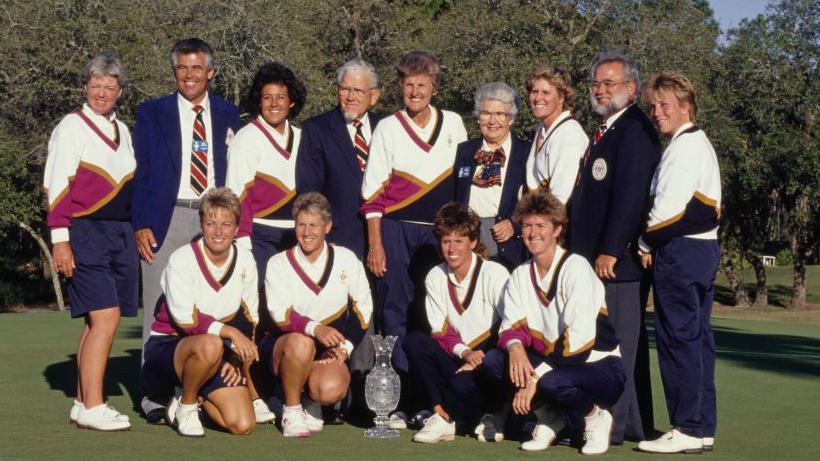
The victorious 1990 US team with members of the Solheim family and the Waterford Crystal trophy
The first Solheim Cup was always going to be a mismatch, though - and Europe’s captain Walker knew it.
“We were playing a team of superstars, legends of the game who all the European players looked up to,” says Walker. “It was like an exhibition match for the US players, it was a match that mattered a lot for us.
“But there was absolutely no chance that we were going to win.”
The original format had eight players on each team, all playing on all three days, with four foursomes matches on day one and four fourball matches on day two, before eight singles on the final day.
Davies and Nicholas beat future Hall of Famers King and Daniel in the alternate-shot format on day one, while Scotland’s Wright teamed up with Neumann to win a fourball match on day two.
The gulf in class was evident though, as the US took a 6-2 lead into the singles, needing 2½ points to win the trophy.
They romped home, winning the top five singles by wide margins, before Davies and Dale Reid posted late blue on the board and Wright picked up a half point in the bottom match.
Although Europe lost on points, they won on decibels.
Mochrie said: “From the first tee shot it was apparent the Europeans meant business, and that was judging by the number of boisterous fans who had made the trip across the Atlantic.
“A much smaller number of reserved US family and friends were in the gallery, but the Euro fans took everything they’d learned from the Ryder Cup and brought it to Florida. They were awesome.”
And the European players “had the biggest party afterwards”, recalls John Solheim.
“The Americans kind of split straight after, but the Europeans had a big party at the clubhouse - that was special.”
Walker recalls the majority of the European fans, like the US, were “friends and family” and that it was “low-key to begin with” in terms of attendance “but the fact we won the next Solheim made it grow quite quickly”.
“Instead of the Americans thinking they only had to turn up to win, they wanted to win it back, so it immediately made it a contest," she says.
The third edition, in West Virginia in 1994, was the start of a run of three American victories. But crucially, it was the first to be properly televised after the Solheim family ploughed more money in to buy the air time, and then try to recoup that through commercials.
But while the players were invested, the sell to a wider audience was tougher, and amid reports of a shortfall of £3.2m in today's money, John says “we went out on a limb and took care of it”.
“It was my dad’s decision - he wanted it on television. We actually shot footage of the first two events. My dad was trying to get people to see how good it was and he grew the women’s game immensely.”
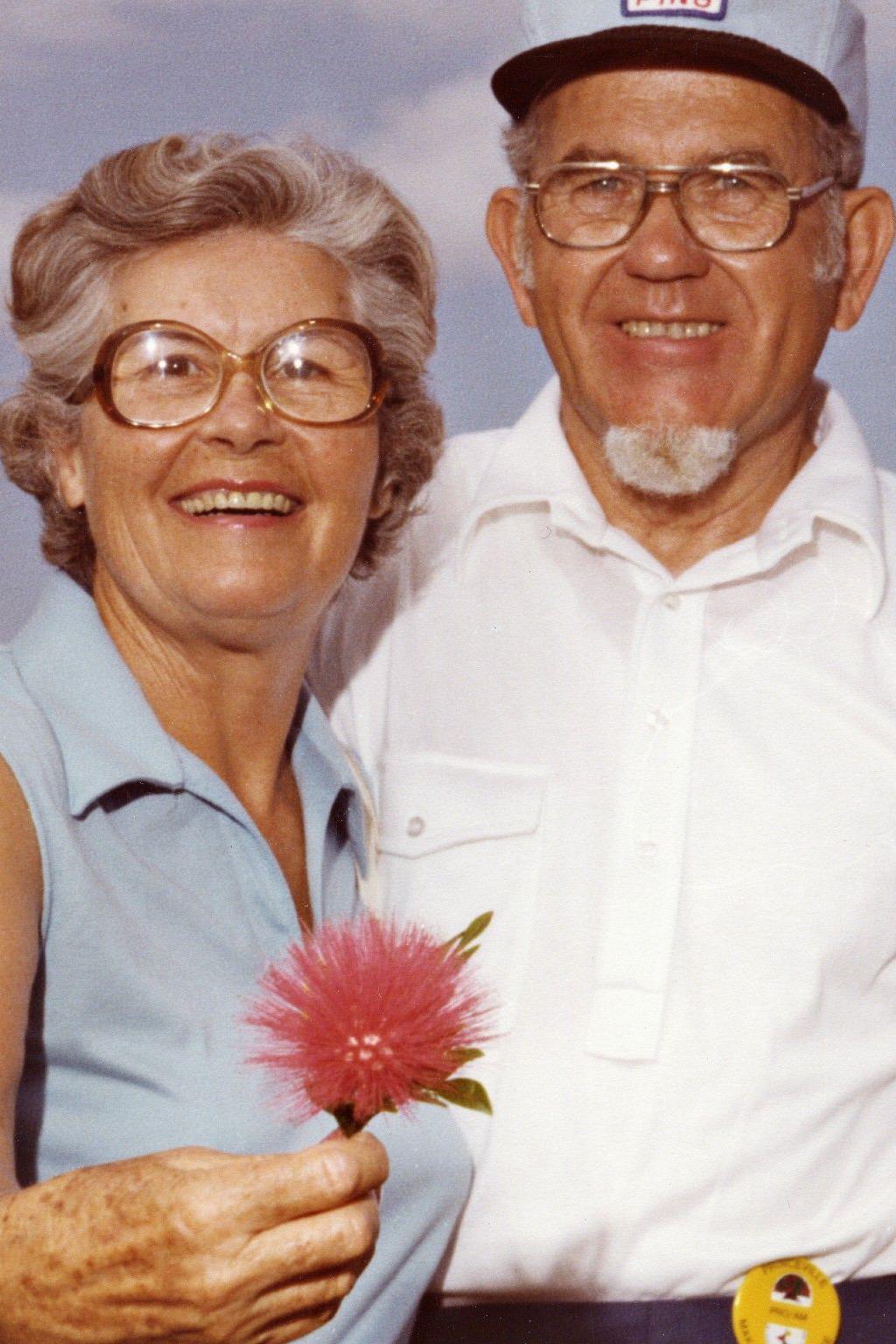
Louise and Karsten Solheim were married from 1936 until his death in 2000
Karsten died aged 88 in 2000, and was posthumously inducted into the World Golf Hall of Fame a year later, to mark his lifetime achievements in the sport. Louise, whose involvement in the rise of the Solheim Cup cannot be overstated, passed away aged 99 in 2017.
“Their goal was to make the Solheim Cup as large as possible, and for it to now have the prestigious status that it has is absolutely amazing. And just to be involved with, it’s a great honour and I know they felt the same,” says John.
And the proof is in the pudding at this week’s Solheim Cup, the 19th staging of the contest. There will be up to 100,000 spectators in Virginia as Europe look to retain the trophy for a record fourth event, after last year’s 14-14 draw in Spain that followed victories in Ohio and Scotland.
It promises to be a sunnier week than at Dalmahoy in 1992, although there is a threat of rain - and there will definitely be more than a murmur in the media about the contest.
Related topics
Previously on Insight
- Published3 September 2024
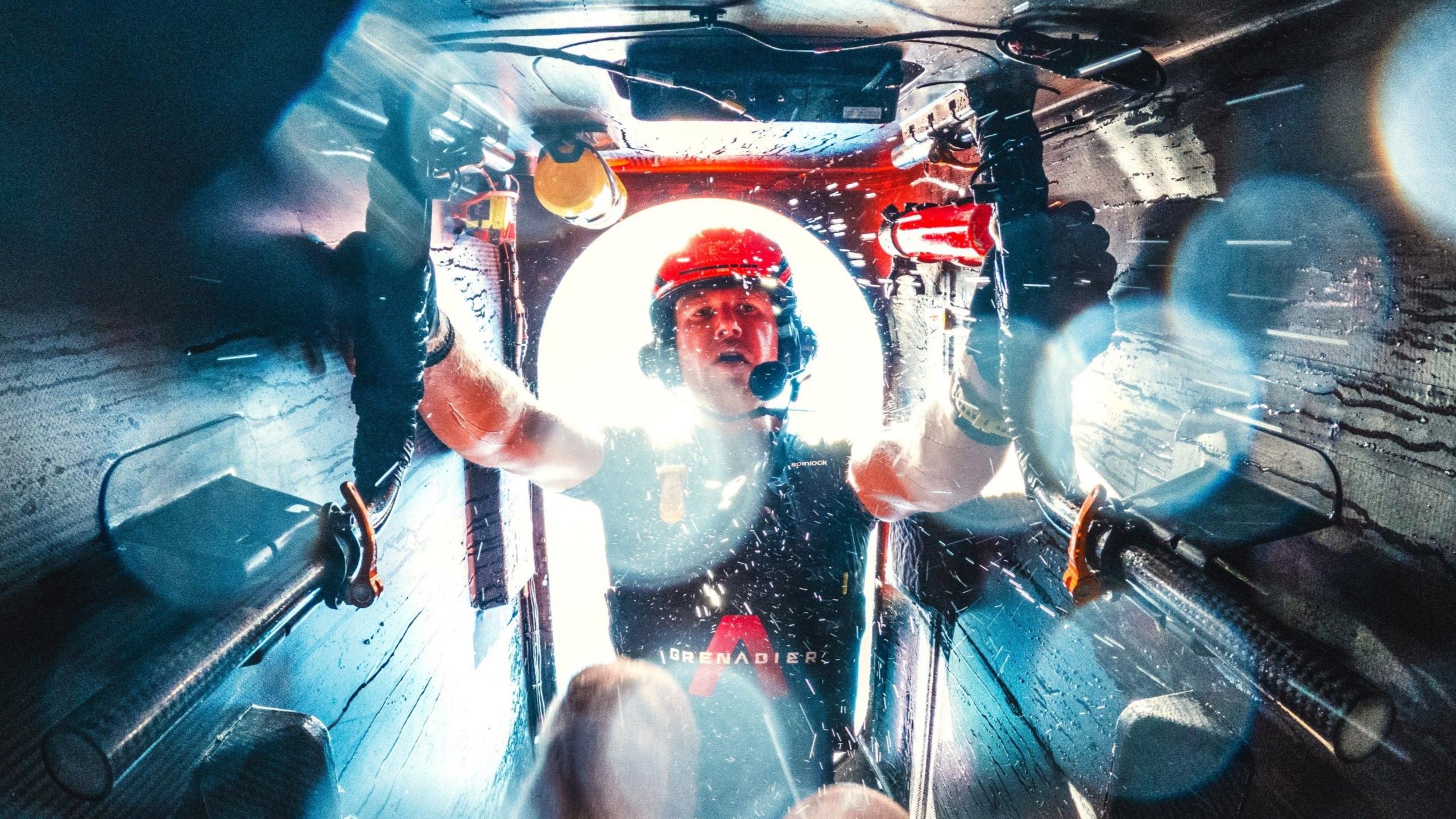
- Published29 August 2024
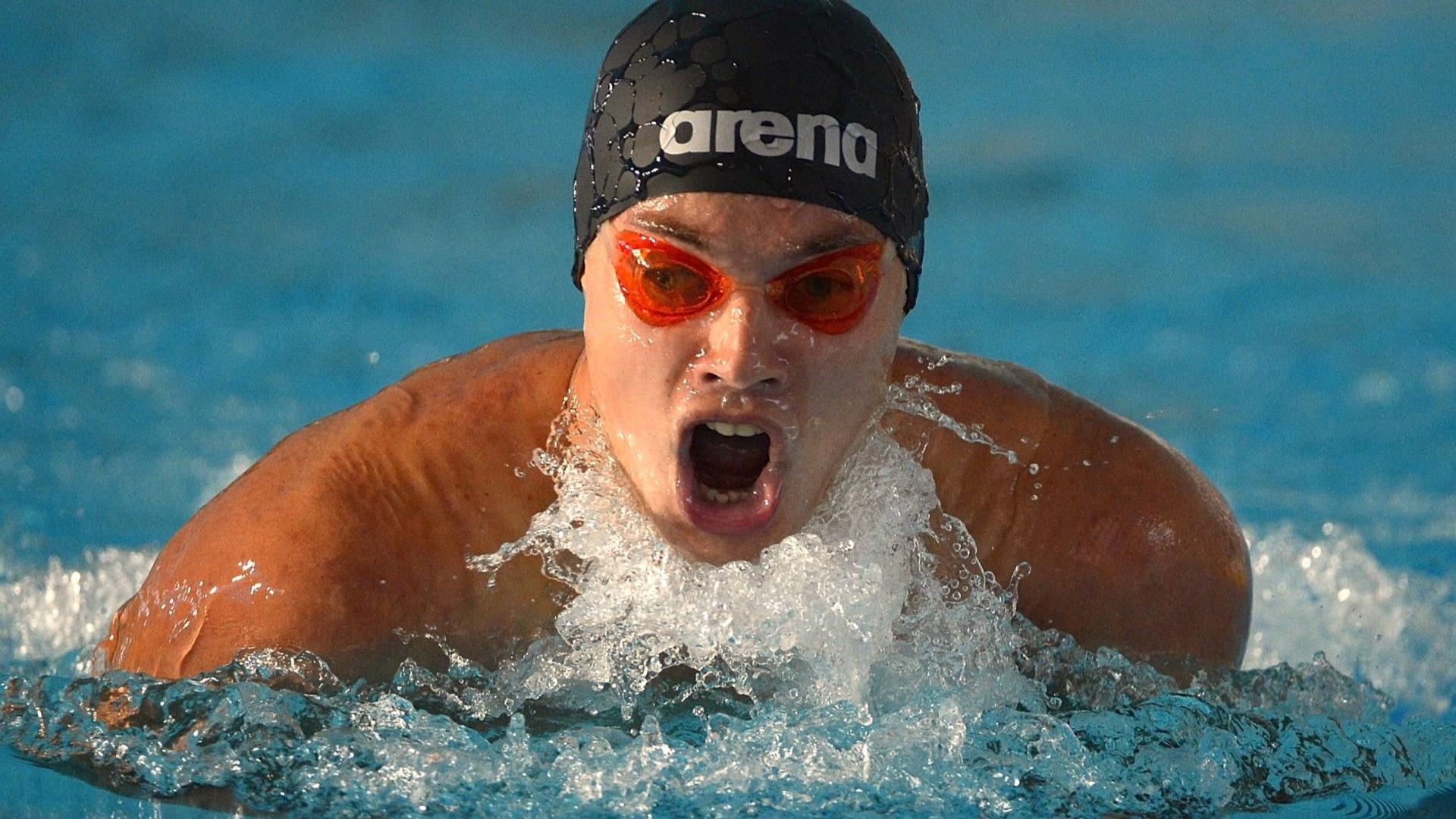
- Published28 August 2024
